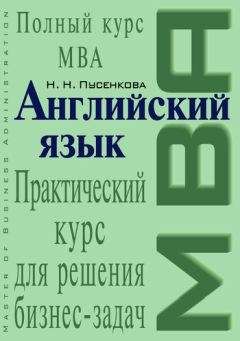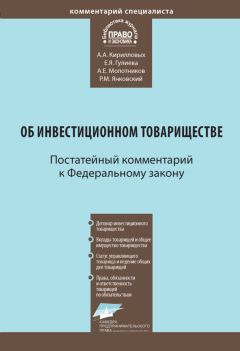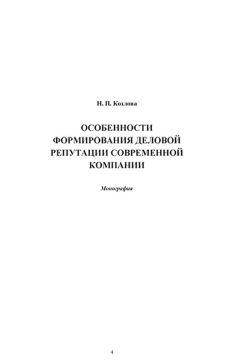Ознакомительная версия.
Neglecting taxes, the WACC would be equal to the expected ROA because the WACC is the return on a portfolio of all the firm’s equity and debt, and such a portfolio essentially has claim to all of the firm’s assets.
Estimating Beta
In order to use the CAPM to calculate ROA or ROE, one needs to estimate the asset (unlevered) beta or the equity (levered) beta of the firm. The beta that often is reported for a stock is the levered beta for the firm. When estimating a beta for a particular line of business, it is better to use the beta of an existing firm in that exact line of business (a pure play) rather than an average beta of several firms in similar lines of business. Expressing the levered beta, unlevered beta, and debt beta in terms of the covariance of their corresponding returns with that of the market, one can derive an expression relating the three betas. This relationship between the betas is:
betalevered = betaunlevered (1 + (1– t) D/E)– betadebt(1 – t) D/E
betaunlevered = (betalevered + betadebt(1 – t) D/E) / (1 + (1– t) D/E)
The debt beta can be estimated using CAPM given the risk-free rate, bond yield, and market risk premium.
Unlevered Free Cash Flows
To value the operations of the firm using a discounted cash flow model, the unlevered free cash flow is used. The unlevered free cash flow represents the cash generated by the firm’s operations and is the cash that is free to be paid to stock and bond holders after all other operating cash outlays have been performed.
The value of the firm at the end of the last year for which unique cash flows are projected is known as the terminal value. The terminal value is important because it can represent 50% or more of the total value of the firm.
Three Discounted Cash Flow Methods for Valuing Levered Assets
APV (Adjusted Present Value) Method
The APV approach first performs the valuation under an unlevered all-equity
assumption, then adjusts this value for the effect of the interest tax shield:
VL = VU + PVITS
where VL = value if levered;
VU = value if financed 100% with equity;
PVITS = present value of interest tax shield.
The unlevered value is found by discounting the unlevered free cash flow at the required return on assets. The present value of the interest tax shield is found by discounting the interest tax shield savings at the required return on debt, rD.
The APV method is useful for valuing firms with a changing capital structure since the return on assets is independent of capital structure. For example, in a leveraged buyout, the debt to equity ratio gradually declines, so the required ROE and the WACC change as the lenders are repaid. However, when calculating the terminal value it may be appropriate to assume a stable capital structure, so in calculating the terminal value in a leveraged buyout situation the WACC method may be a better approach.
Flows to Equity Method
The flows to equity method sums the NPV of the cash flows to equity and debt.
Then,
VL = E + D
WACC Method
The WACC method discounts the unlevered free cash flow at the weighted average cost of capital to arrive at the levered value of the firm.
Cash Flows to Debt and Equity
When calculating the amount of cash flowing to debt and equity holders, it is not appropriate to use the unlevered free cash flows because these cash flows do not reflect the tax savings from the interest paid. Starting with the UFCF, add back the taxes saved to obtain the total amount of cash available to suppliers of capital.
At times a firm may wish to know at what price it would have to sell its product for a particular investment to have a positive NPV. To determine this price, express the operating cash flow in terms of price. Write out the expression for the NPV using the appropriate discount rate. For the longer operating period, one can calculate an annuity factor to multiply by the operating cash flow expression. Solve the expression for the cash flow that would result in an NPV of zero. Since the operating cash flow was written in terms of price, the price now can be found.
While debt may be issued at a particular face value and coupon rate, the debt value changes as market interest rates change. The debt can be valued by determining the present value of the cash flows, discounting the coupon payments at the market rate of interest for debt of the same duration and rating. The final period’s cash flow will include the final coupon payment and the face value of the bond.
Optimal Capital Structure
The total value of a firm is the sum of the value of its equity and the value of its debt. The optimal capital structure is the amount of debt and equity that maximizes the value of the firm.
If a firm has extra cash on hand it may choose to buy back some of its outstanding shares. This decision can be based on information that the firm has and that the market does not have. Therefore, a share buyback could serve as a signal that the share price has potential to rise at above average rates.
Source: www.quickmba.com
1. historical cost – историческая стоимость (фактическая стоимость приобретения актива)
2. trademark n – торговая марка
3. accounting profit – учетная (бухгалтерская) прибыль
4. paid-in capital – авансированный (оплаченный) капитал
5. cash flow statement – отчет о движении денежных средств
6. operating activities – операционная деятельность
7. investing activities – инвестиционная деятельность
8. financing activities – финансовая деятельность
9. cash cycle – денежный цикл
10. payables n., pl – кредиторская задолженность
11. expensing of costs – вычитать расходы для целей налогообложения
12. income statement – отчет о прибылях и убытках
13. cost of goods sold (COGS) – себестоимость реализованной продукции
14. current assets – текущие (краткосрочные) активы
15. collection period – средний срок инкассации поступлений
16. inventory period – средний срок реализации запасов
17. payables period – средний срок покрытия кредиторской задолженности
18. financial ratio – финансовый коэффициент
19. short-term loan – краткосрочный кредит
20. term loan – срочный (с фиксированным сроком) кредит
21. revolving loan – возобновляемый (револьверный) кредит
22. evergreen loan – «вечнозеленый» кредит (регулярно возобновляемая кредитная линия без требования периодического полного погашения и с фиксированным общим сроком, после чего она может быть снова возобновлена)
23. unlevered a – безрычаговый (без привлечения заемных средств)
24. all-equity financing – финансирование только на основе собственного капитала
25. debt to equity (D/E) ratio – отношение заемного капитала к собственному
26. debt to value (D/V) ratio – отношение заемного капитала к ценности компании
27. Earnings before Interest and Tax (EBIT) – прибыль до уплаты процентов и налогов
28.risk premium – премия за риск
29. opportunity cost – цена возможности, упущенная прибыль
30. Capital Assets Pricing Model (CAPM) – модель оценки фиксированных активов
31. perpetuity n – бессрочное владение, пожизненная рента
32.pure play – «чистая игра» (компания, занимающаяся почти исключительно одним видом деятельности)
33. Adjusted Present Value (APV) – скорректированная приведенная ценность
34. leveraged buyout (LBO) – рычаговый выкуп (выкуп в кредит)
35. hurdle price – «пороговая» цена
36. annuity n – аннуитет, рента (регулярно поступающие равные платежи)
37. coupon rate – купонная ставка
Exercise 1. Answer the following questions.
1. Is the balance sheet method an appropriate way to value a company? 2. What is the essence of the valuation method based on cash flows? 3. Why is a company’s cash cycle important? 4. How can you calculate the number of days of assets and liabilities that a firm has on hand? 5. How can you determine firm value, equity value and debt value? 6. What are the risk premiums? 7. How can you calculate cost of capital? 8. How can you estimate different betas of a company? 9. What DCF methods can be used for valuing levered assets? 10. What is the hurdle price? 11. What is the optimal capital structure? 12. What are the implications of share buyback?
Exercise 2*. Find terms in the text that match definitions given below and make sentences of your own with each term.
1. anything owned by a business or individual that has commercial or exchange value
2. financial statement that presents a «snapshot» of what the business owns, what it owes, and what equity it has on a given date
3. indicates how quickly your customers pay you
4. a discipline dealing with the firm’s operations with regard to investing and financing
5. figure representing the cost of buying raw materials and producing finished goods
6. cash or other assets you expect to use in the operation of the firm within one year
7. distribution of earnings to shareholders
8. value of a firm’s raw materials, work in process, supplies used in operations, and finished goods
9. measures the firm’s use of borrowed funds versus those funds provided by the shareholders or owners
10. amount owing to creditors for goods and services on an open account
11. amount due from customers for merchandise or services purchased on an open account
12. a company’s purchase of its outstanding stock
13. a loan for a specified amount for a fixed period of time (usually 1 to 10 years) and often with a fixed periodic repayment
Exercise 3*. Fill in the blanks using terms given below.
Introduction into the DCF Analysis
The notion that money has…… is a basic concept of finance. The sooner funds are received, the sooner they can be put to work in other new…… If funds are received later rather than sooner, the recipient forgoes the……. that could have been earned in the meantime. Therefore, to analyze the economic worth of investment opportunities, managers must take into account the timing of…….. as well as their amounts.
The rate of interest represents the rate at which……. funds can be exchanged for…… funds, and vice versa. The interest rate is the rate of exchange over time and is the tool for…….. cash flows to account for differences in timing. Time affects cash flows through the……… of compound interest.
The future value of a sum of money equals its present value…….. forward through time at the appropriate interest rate. Similarly, the present value of a future sum is its future value……….. back to the present. The present value of a……… of payments is the sum of the present values of its separate elements. In the case of level streams (……….), the computation of present value can be simplified using present-value tables.
The general DCF……. expresses the value of an asset as the sum of all payments the asset will generate, discounted to their present value. Using DCF techniques, a complex……. of cash flows extending over many time periods can be reduced to a single figure that is equivalent in value. The present value of a stream of cash…….. can be compared to the……… required to generate it. Similarly, two or more……… investments (each of which generates a complex cash flow stream) can be reduced to present values and compared directly. DCF techniques greatly simplify the……… of complex cash flow patterns.
Terms:
stream, valuation, adjusting, annuities, outlay, time value, discounted, investments, inflows, future, model, interest, cash flows, alternative, present, mechanism, pattern, compounded
Exercise 4. You are a Harvard Business School graduate hired as CFO by a major Russian company. Its CEO has heard about DCF analysis and wants to use it for valuing investment projects of his company. You have to explain to him the advantages and disadvantages of this method. Invent a dialogue between these two individuals using the following briefing materials.
Ознакомительная версия.





